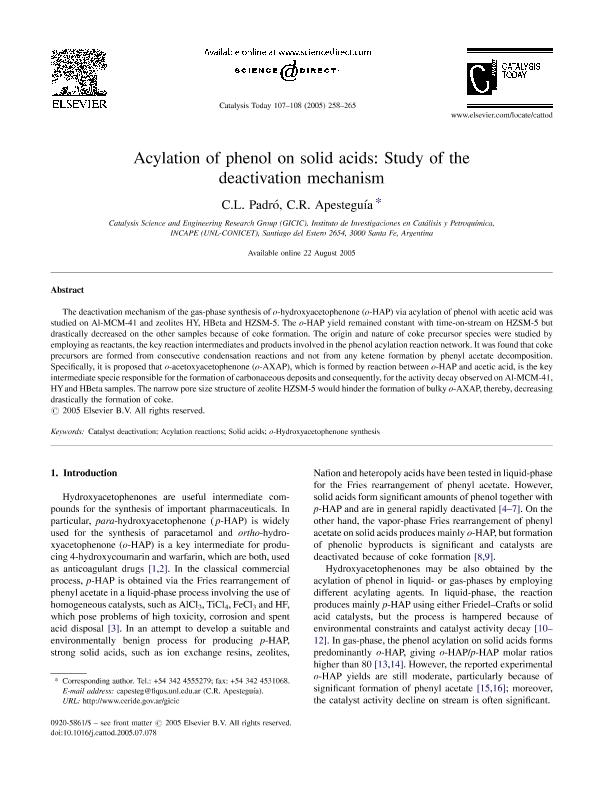Artículo
Acylation of phenol on solid acids: Study of the deactivation mechanism
Fecha de publicación:
10/2005
Editorial:
Elsevier Science
Revista:
Catalysis Today
ISSN:
0920-5861
Idioma:
Inglés
Tipo de recurso:
Artículo publicado
Clasificación temática:
Resumen
The deactivation mechanism of the gas-phase synthesis of o-hydroxyacetophenone (o-HAP) via acylation of phenol with acetic acid was studied on Al-MCM-41 and zeolites HY, HBeta and HZSM-5. The o-HAP yield remained constant with time-on-stream on HZSM-5 but drastically decreased on the other samples because of coke formation. The origin and nature of coke precursor species were studied by employing as reactants, the key reaction intermediates and products involved in the phenol acylation reaction network. It was found that coke precursors are formed from consecutive condensation reactions and not from any ketene formation by phenyl acetate decomposition. Specifically, it is proposed that o-acetoxyacetophenone (o-AXAP), which is formed by reaction between o-HAP and acetic acid, is the key intermediate specie responsible for the formation of carbonaceous deposits and consequently, for the activity decay observed on Al-MCM-41, HY and HBeta samples. The narrow pore size structure of zeolite HZSM-5 would hinder the formation of bulky o-AXAP, thereby, decreasing drastically the formation of coke.
Archivos asociados
Licencia
Identificadores
Colecciones
Articulos(INCAPE)
Articulos de INST.DE INVEST.EN CATALISIS Y PETROQUIMICA "ING. JOSE MIGUEL PARERA"
Articulos de INST.DE INVEST.EN CATALISIS Y PETROQUIMICA "ING. JOSE MIGUEL PARERA"
Citación
Padro, Cristina; Apesteguia, Carlos Rodolfo; Acylation of phenol on solid acids: Study of the deactivation mechanism; Elsevier Science; Catalysis Today; 107-108; 10-2005; 258-265
Compartir
Altmétricas




